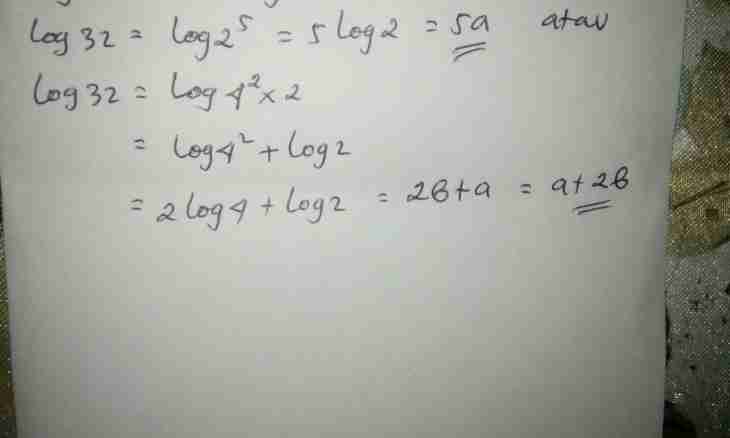The solution of examples with logarithms is required from pupils of high schools, since the ninth class. The subject seems to much difficult as logarithming seriously differs from habitual arithmetic actions.
It is required to you
- Calculator, reference book on elementary mathematics
Instruction
1. At first it is necessary to acquire an essence of logarithming accurately. Logarithming is an operation, the return to exponentiation. Repeat the subject ""Exponentiation of Natural Numbers"". Especially important to repeat properties of degrees (the work, private, degree in degree).
2. Any logarithm consists of two numerical parts. The lower index is called the basis. The top index is that number which will turn out at construction of the basis in the degree equal to all logarithm. There are irrational logarithms which should not be calculated. If the logarithm gives final natural number in the answer, it needs to be calculated.
3. At the solution of examples with logarithms it is always necessary to remember restrictions of area of permissible values. The basis is always more than 0 and is not equal to unit. There are also special types of logarithms of LG (decimal logarithm) and ln (a logarithm natural). The decimal logarithm has in the basis 10, and natural - number e (it is approximate equal 2.7).
4. For the solution of logarithmic examples it is necessary to learn the main properties of logarithms. Except the main logarithmic identity it is necessary to know formulas of the sum and the difference of logarithms. The table of the main logarithmic properties is provided on the drawing.
5. Using properties of logarithms, it is possible to solve any logarithmic example. Just we need to lead all logarithms to one basis, then to reduce them to one logarithm which is easy for calculating by means of the calculator.
